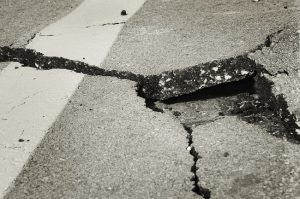GPR, or ground penetrating radar, is an important tool for many types of construction work, especially when it comes to cutting concrete. This tool can help you identify underground structures and lines that you may need to avoid or excavate, but there are still many misconceptions about how GPR works. GPR scanning professionals can assist you on a variety of sites, identifying underground structures and making concrete cutting safer, while helping to clear up any misunderstandings you may have about GPR. Here are just a few examples of common GPR misconceptions.
Surface Condition Won’t Impact Readings
A big part of GPR scanning is the moisture content of the ground. This means that surface conditions, no matter the material you’re scanning, will impact the quality of the readings you get. This means that older concrete, for example, will have less moisture content and result in very different readings from newer concrete. To get the best reading possible, scanning should not be done just after a rain, as this can make it hard to understand your readings.
GPR is Precise
While GPR is excellent for its non-destructive qualities and ability to effectively identify objects underground, it is unfortunately not 100% precise. There are many variables that can impact the quality of your scans, including underground wire mesh and rebar. The fact of the matter is that conditions will rarely, if ever, be completely ideal, but the right GPR scanning professionals can help you get the most out of GPR scanning.
You Can Scan Yourself With GPR Equipment
GPR equipment is well-known for its ease of use, but the readings are another matter entirely. A properly trained GPR professional will be best equipped to understand GPR readings for any scanning purposes. While you may be able to acquire and set up GPR equipment, interpreting the data can be very difficult, and if you’re not trained to do so, you can make unfortunate mistakes that set your project back.
GPR Differentiates Between Objects
Since GPR uses radio waves to paint a picture of the materials, water content, and soil types beneath the ground’s surface, you may assume it differentiates between everything in the ground. But readings are actually not so distinct, which is why a professional is needed to properly interpret the results and make a conclusion about what the scans have picked up underground or in the concrete material.
GPR Services from Concrete Visions
Concrete Visions has over 12 years of experience and expertise in concrete scanning and we know how to detect any problems lurking beneath the surface. We use ground penetrating radar accurately and expertly and are familiar with many other methods that can be used when appropriate like concrete x-ray and electromagnetic conductivity. We are also very familiar with the latest construction safety techniques and train all of our workers to do their work quickly, accurately, and safely. If you would like to learn more about how we can help you, give us a call at (410) 766-2210 or visit us online. For more articles and tips, follow us on Facebook, Twitter,LinkedIn, and Google+.

